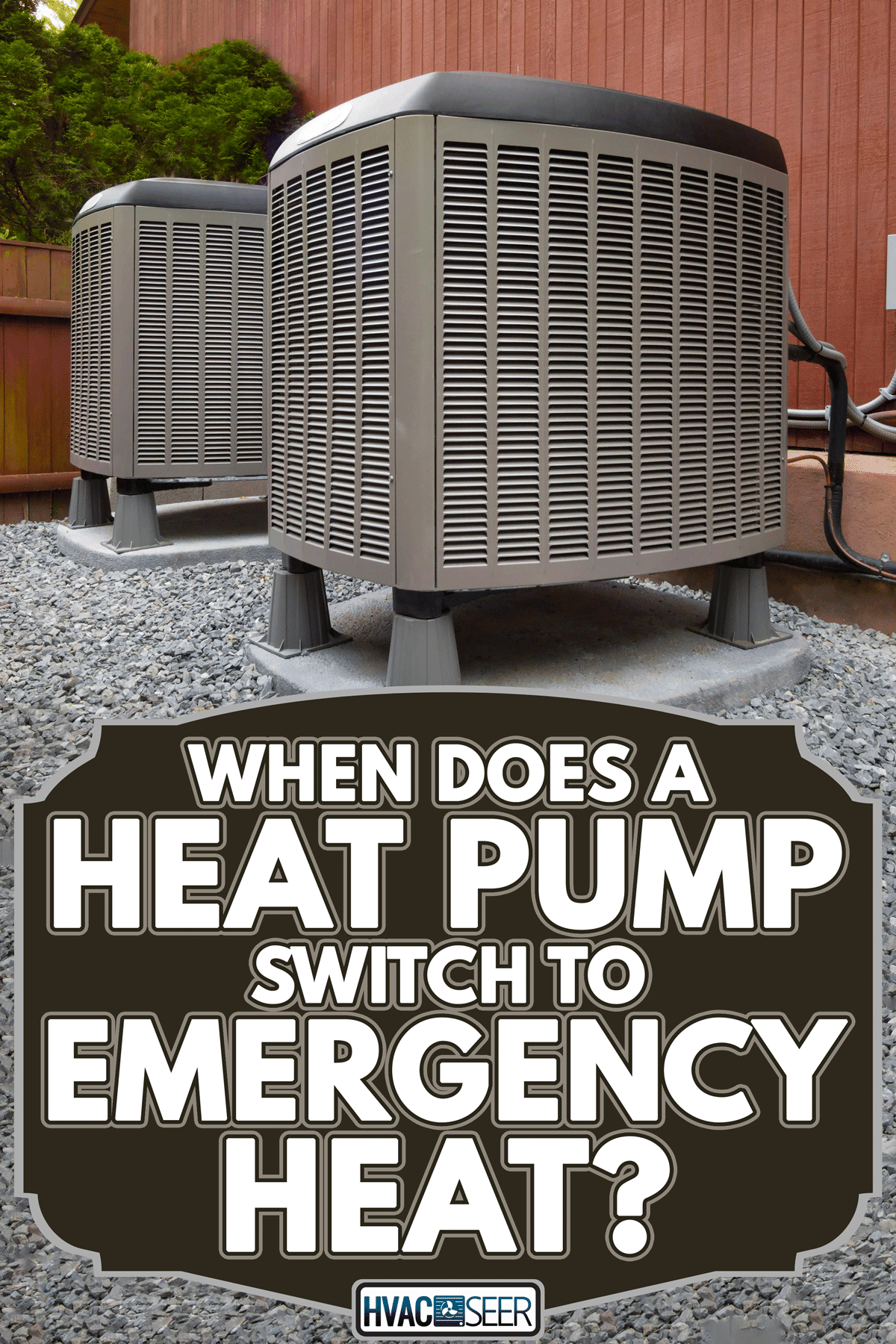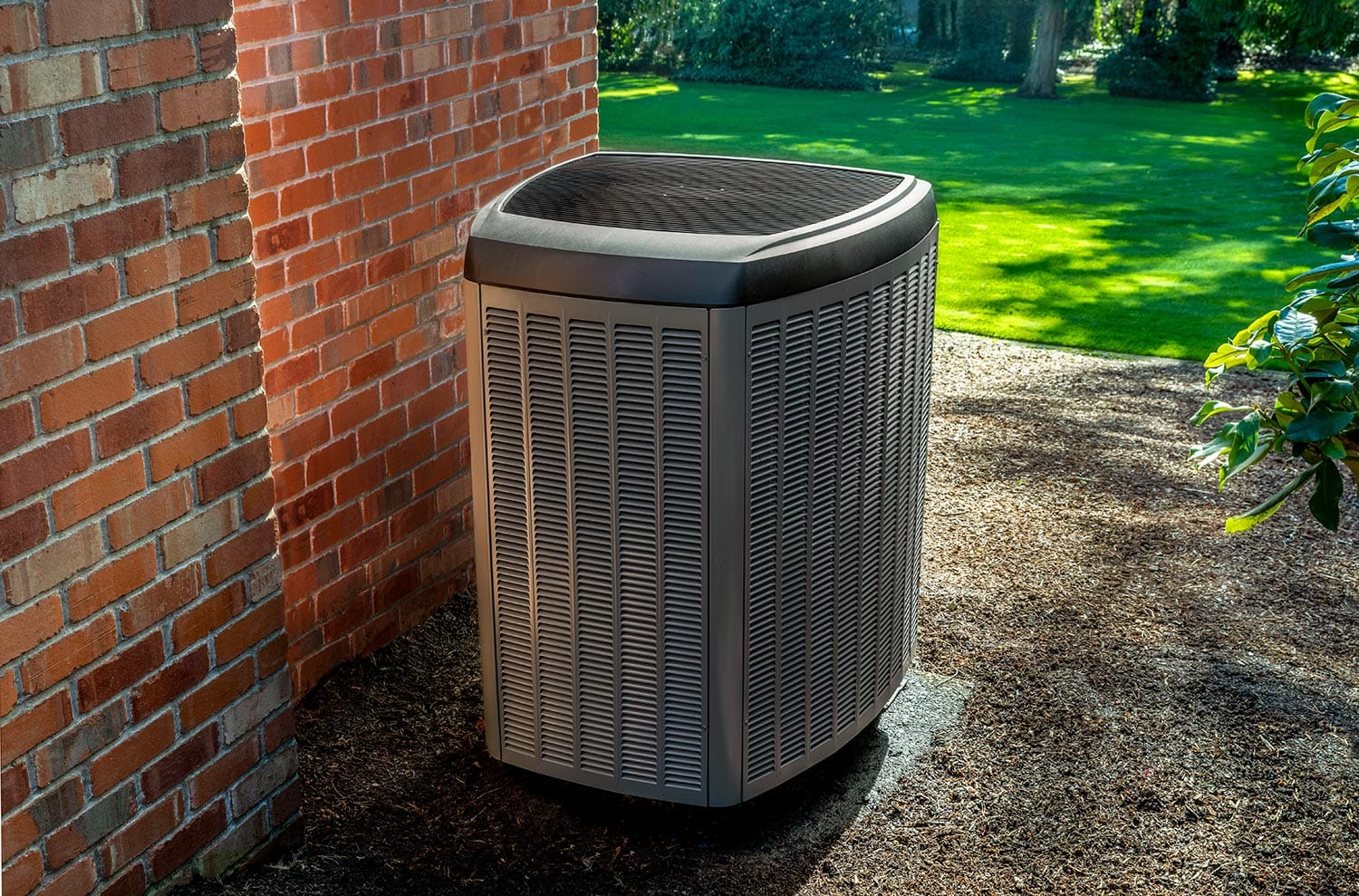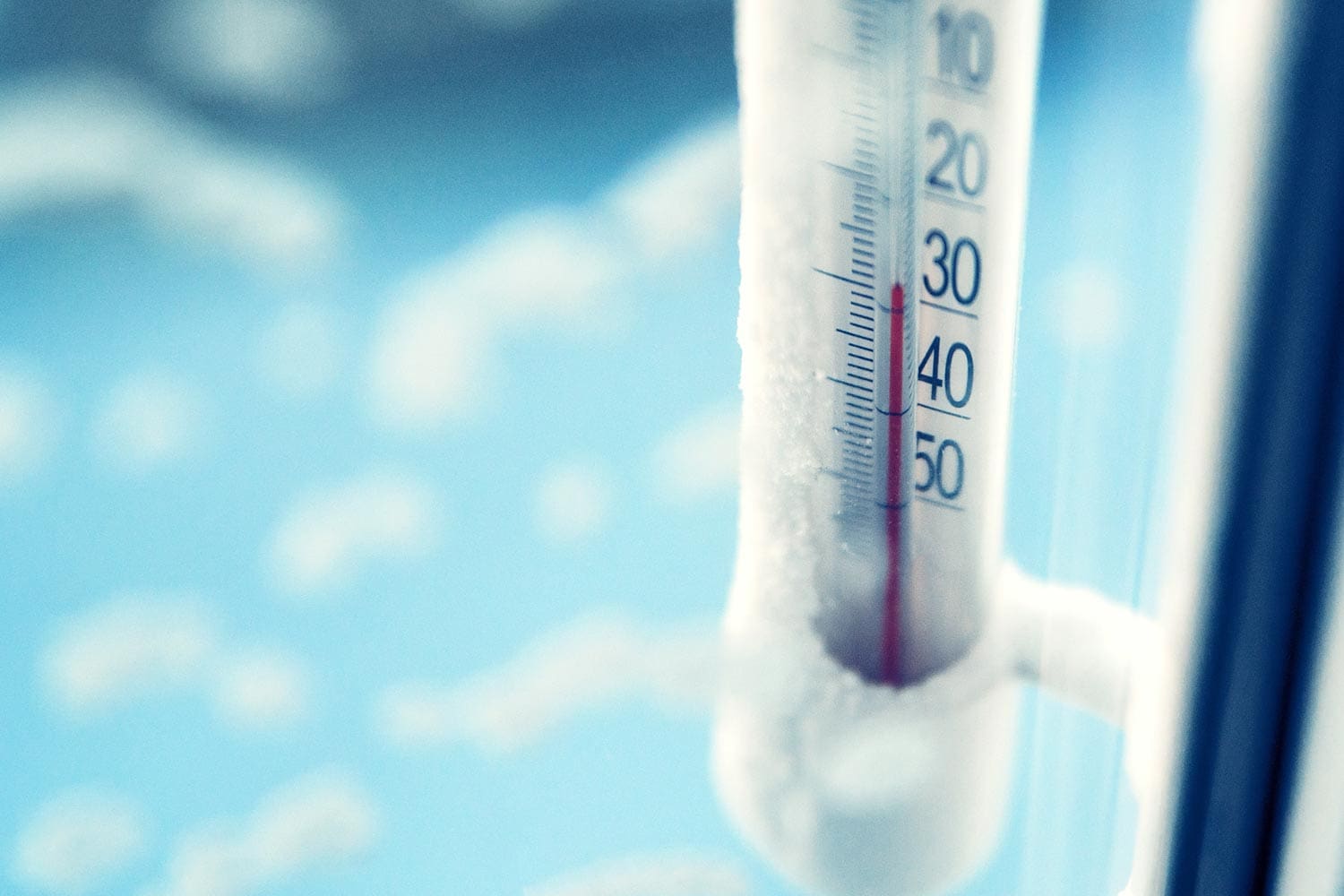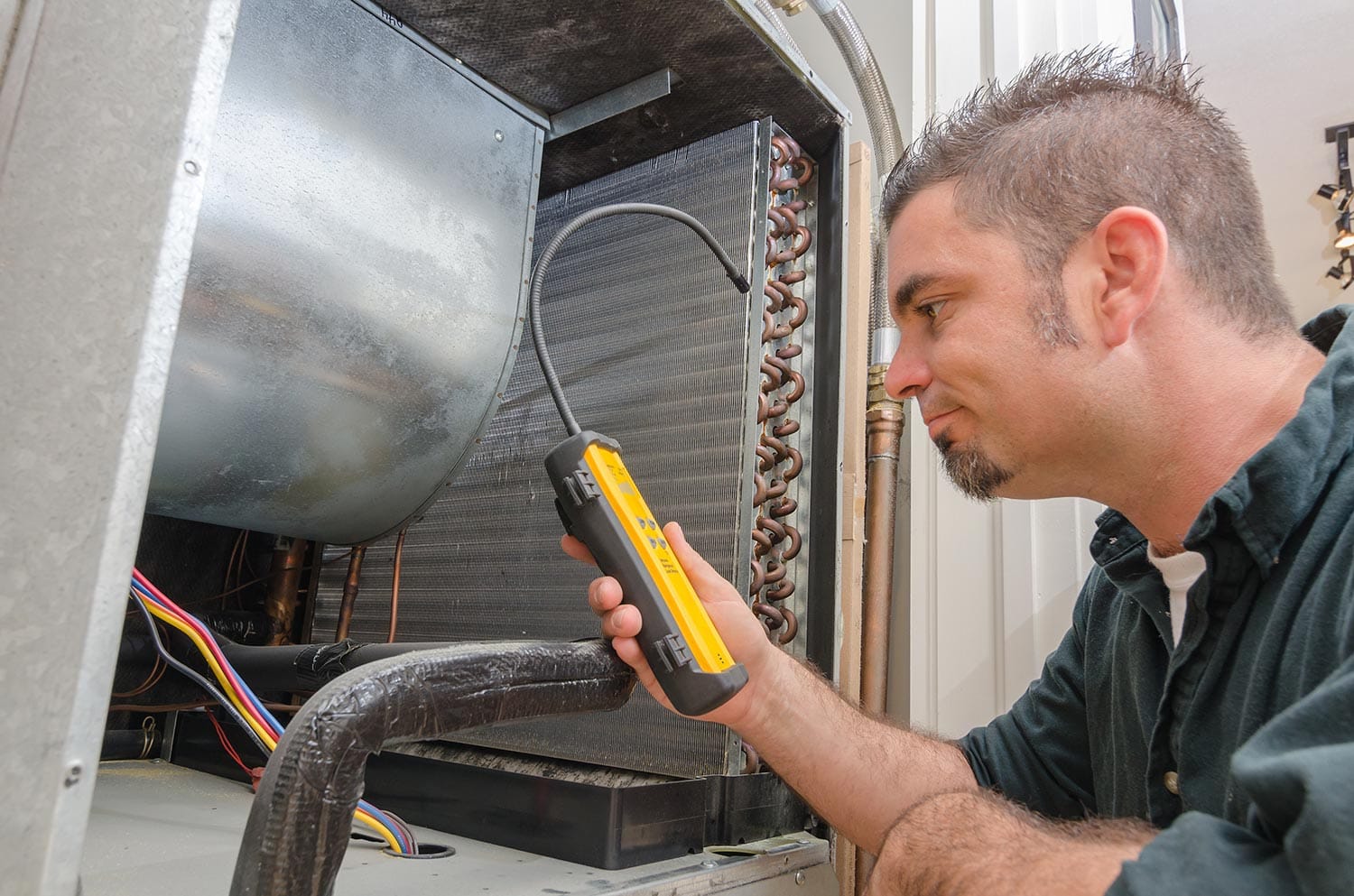If you want to keep your home comfortable, heating is necessary. Heat pumps are one way to accomplish this. But, like most technology nowadays, it has an emergency setting. So, you might wonder when a heat pump will activate this mode. If that's a concern, let's go over the details.
Emergency heat is a mode that you can turn on automatically or manually. Heat pumps go into this mode when temperatures drop too low. When this happens, it needs the help of a secondary heat source. So, the heat pump will turn off and an electric resistance heater or a gas furnace takes over.
At this point, you're probably wondering why a heat pump would need a secondary heat source. What's more, why would it turn off and let an electric resistance heater do the work? These are understandable concerns. We will discuss this and more, so continue reading.

How Does a Heat Pump Work?
If you want to know why a heat pump uses a secondary heat source, we can start by learning how it operates. Although a heat pump has heat in its name, it doesn't generate heat. Instead, it works by moving heat from one place to another.
So, during the cold winter months, a heat pump will absorb the heat from the outside and redistribute it indoors. Yes, it works even in cold temperatures!
Heat pumps can operate in two modes: heating and cooling. It works through a similar mechanism that refrigerators and air conditioners use. They utilize the help of a refrigerant.

How It Produces Heat
If you want heat, there needs to be a temperature difference. So, if the temperature outside is around 50 degrees Fahrenheit, you'll need to put it in contact with a temperature colder than that.
A refrigerant can easily reach low temperatures as it decompresses. Another component, the expansion valve, is in charge of decompressing the refrigerant. Once the heat pump pushes the refrigerant through the expansion valve, the refrigerant gets colder by a vast difference.
At this point, the outside air is hotter than the refrigerant. From here, we see a simple concept in action. Heat likes to move from warmer materials to colder ones.
The heat from the outside air goes into the refrigerant. Finally, it brings that heat into your home. It might sound like magic. But, it works well enough to keep your home comfortable.
If you'd like to see an explanation with examples, here's a YouTube video to help:
The Disadvantage of Using a Heat Pump
Now, we should have a basic understanding of how a heat pump works. If you want heat, the refrigerant in the system needs to be colder than the outside air. As you can guess, sometimes it can't do that.

There is a point where a heat pump cannot operate as efficiently. As temperatures dip below 40 degrees Fahrenheit, a heat pump will need to work harder to keep you comfy. Yes, it will continue to heat your home as best as it can.
But, as temperatures lower, it loses efficiency. At a certain point, it can no longer keep up with demand. So, it will turn off and use a secondary heat source.
That's why it has an emergency heat mode. This mode is necessary for periods where heat pumps can not meet demands. However, you will have the choice to choose the backup heat source you want to use in these cases.
Backup Heat Sources
The most common backup heat source is an electric resistance heater. Electric resistance heaters operate by using one or more heavy-duty heating elements. Each element works in 30-second intervals.
This way, it can heat your home without causing surges in the electrical power system. You can find them inside the heat pump enclosure. Otherwise, they might be inside the ductwork.
You can also equip heat pumps to work with a gas furnace. This type of configuration is called a dual-fuel or hybrid system. So, you'll have two small systems side-by-side sharing the same ductwork.
When Should You Use the Heat Pumps Emergency Heat?

When something fails, it's always good to have a backup plan. As we've learned, heat pumps have a secondary heat source for periods where they can't heat your home. You won't have to turn this option on manually.
Heat pumps will usually have an internal thermostat that switches it on automatically. When the temperature outside drops below the set temperature point, the system will go into emergency heat.
It may also go into this mode when it needs to defrost. Generally, you should avoid using emergency heat when everything is functioning normally.
The Exceptions
However, we can't expect systems to function 100% of the time. There will be situations where you will need to use emergency heat manually. If you notice your home is getting colder, but the heat pump is still functioning, use emergency heat.
In this situation, there's something wrong with the heat pump. So, you can use the secondary heat source until HVAC services can come to fix the system.
If it's your first time learning about this configuration, one concern may come to mind. For example, what if you were using this mode to heat your home quickly?
Using emergency heat in a situation without an emergency only increases your energy bills. The electrical heat strip isn't as efficient as the heat pump. In addition, you're taxing a system that is only supposed to be a backup.
Can Emergency Heat Cause a Fire?
Using electricity to heat your home is not only costly. Sometimes, it can be risky too. Since most heat pumps use an electric resistance heater as a backup, you might wonder if it can cause a fire.
Fortunately, as long as it's working properly, it shouldn't be a concern. There's only a slight chance that it can catch on fire. However, that's when the system isn't working as it should.
When a heat pump malfunctions, it can start a fire because of overheating. The other way a fire can happen is through faulty electrical connections. They're a major reason for fires in HVAC systems.
As long as you're maintaining your heat pump, you shouldn't be too worried about fires.
How Long Should a Heat Pump Run per Day?
As mentioned, heat pumps function similarly to air conditioners. So, the runtime will be around the same. Heat pumps go through cycles. It will turn on and off throughout the day.
Generally, it will depend on the unit's heating capacity, room temperature, and humidity. Heat pumps cycle two to three times an hour. The cycles should be around 10 to 20 minutes long.
On occasions where temperatures dip too low, it can run for longer. If your heat pump is running all day while temperatures outside are mild, it could indicate a problem.
Heat pumps should only constantly run when temperatures dip below 30 degrees Fahrenheit. They work more efficiently when temperatures are above this limit.
Why Would a Heat Pump Blow Cold Air in Heating Mode?
The way a heat pump works makes it possible to transfer cold or hot air into your home. If your heat pump is blowing cold air while in heating mode, there are a few explanations.
Defrost Mode
As mentioned, heat pumps have a defrost mode. Since the unit is outside, it needs a way to melt ice formations. While it's in this mode, it works the same as the cooling mode.
While it melts the ice, it will blow cold air into your home. If it's in this mode, you'll need to switch it back to heating mode. However, make sure the defrost cycle finishes first.
Leaking Refrigerant

The other reason is a major cause for concern. If you notice the heat pump is blowing less conditioned air, there might be a refrigerant leak. Refrigerant is crucial for the heat pump to operate correctly.
It's the lifeblood of a heat pump. You can know if this applies to your situation by noticing a few crucial signs. Short cycling is one sign that your heat pump might be leaking refrigerant. Though, other factors can cause this.
For this reason, check the evaporator coil too. The evaporator coil is in charge of absorbing the refrigerant's heat. If the heat pump is low on refrigerant, the evaporator coil will freeze up.
You will see ice formations around that area. Refrigerant can also leave a grease-like film on surfaces. Finally, you might also hear a faint hissing or bubbling noise. Differences in pressurization are the reason it can produce these noises.
In Closing
Emergency heat is a setting that activates when your heat pump can't keep up. It's needed because heat pumps won't work as efficiently when temperatures drop. As its name implies, you should only use it during emergencies. We hope you found the information above helpful!
Before you go, do you have other heat pump concerns? Do you need more information on the defrost setting? To learn more, check out:
How Often Should A Heat Pump Defrost?
Is your heat pump making loud sounds? We can help you troubleshoot. If you'd like more information on the topic, check out:
